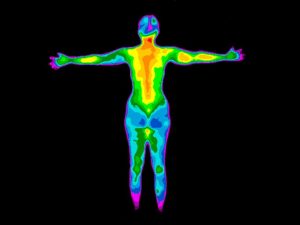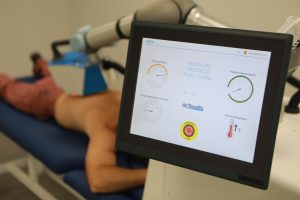Project Description
The challenge of physical therapy
Back pain is a global medical problem associated to what is called Musculoskeletal Disorders and is the leading cause of disability worldwide affecting 4 billion people, 80% of the population will experience back pain during their life time. In fact the WHO has listed back pain among the top priority diseases. Back pain is rapidly growing among the population increased by factors such as ageing population, physical inactivity, or obesity.
To understand patients’ pain, physiotherapists rely on their experience and patient interviews to develop a treatment plan, obtain data regarding patients, pain status and treatment evolution. This can lead to mistreatment decisions, inconsistency through change of physiotherapist and lack of measurable results. Alternatives to manual treatments currently in the market are trigger-point injection or dry needling, both very invasive. New therapy methods have also appeared aiming to improve the efficiency on Myofascial trigger points treatment and time recovery of the patients: ultrasound, acoustic compression, or transcutaneous electrical nerve stimulation. Still these methods are neither automated nor provide scientific evidence of improved results.


The use of robotic therapy is on the rise!
Such a rise in the demand of back pain treatments combined with actual methods constrains is outstripping the capacity to provide health services. This is causing big problems in public and private centers and insurance companies, as they need to treat more patients without increasing their costs.
FEN’s physical therapy robot consists of a six-axis robotic arm capable of highly articulated movements to provide precise therapeutic treatment by applying compressed air. This innovative approach has been proved to produces the same effects on the patient’s back as manual therapies in an efficient way, thus reducing treatment time compared to current solutions.
Our robot highly innovates by applying Artificial Intelligence to help therapist identify all the trigger points, suggest the best treatment based on medical data, reproduce the treatment automatically, and track the evolution of client satisfaction. To do so, before each session, the robot explores the patient body with a 3D volumetric scan and thermal vision to identify these knots (hot spots), which appear in strong red color, and locate their position. After exploring the patient’s back pain, the robot defines the positions of the MTPs and treatment properties (pressure, temperature, etc.) and monitors evolution by comparing the thermal vision from different sessions. This unique approach enables therapists to decide the duration and number of sessions based on medical data. All data is securely stored in a distributed cloud system allowing full treatment tracking so that patients can receive sessions at any location.
This project is being developed in collaboration with the Florida International University


